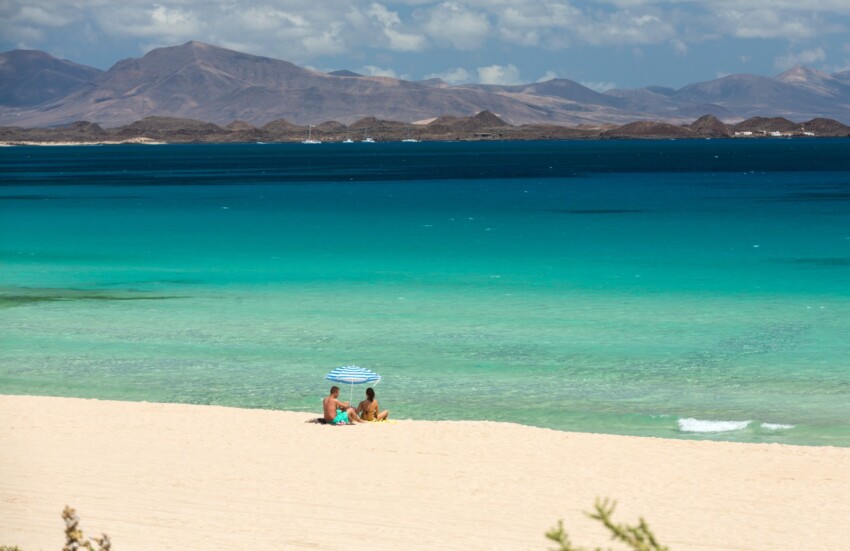

Fuerteventura is famous for its spectacular beaches with a strong Caribbean flavour, 150 in total, and for water sports such as diving, surfing, kitesurfing, sailing and snorkelling.
Kilometres of white sandy beaches washed by crystal-clear turquoise waters attract thousands of tourists from all over Europe every year.
The east coast is the most sheltered from the wind. The quiet bay of Morro Jable in the south of the island and the Grandes Playas near the town of Corralejo are very beautiful, while along the west coast, where the beaches of El Cotillo are located, the waves can be very high.
Also popular are the white sand beach of Jandia, between Costa Calma and Morro Jable, the black sand beaches of Tarajalejo and Gran Tarajal, Cofete, Playa Esmeralda, Esquinzo, La Pared, Playa de Garcey, Mal Nombre and Caleta de Fuste.
Outstanding is Playa de Sotavento, a 5-kilometre stretch of white sand.
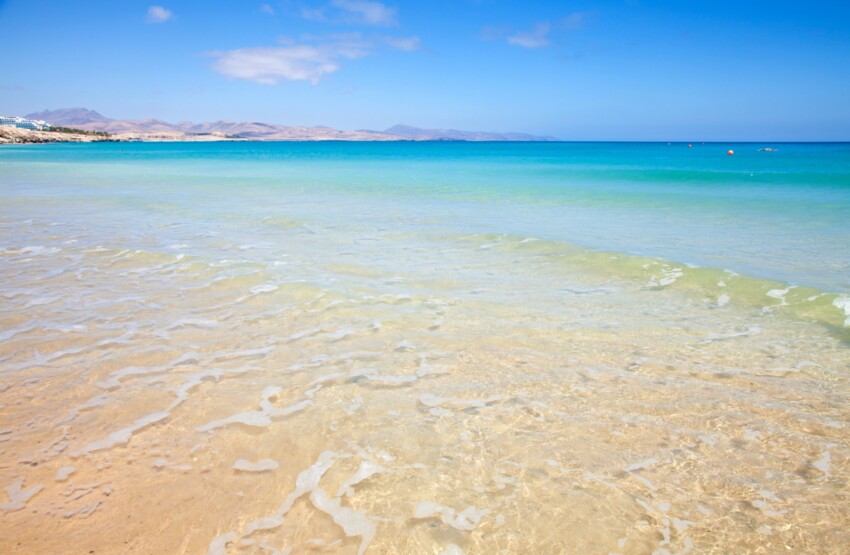
The sensational Playa de Sotavento, one of the most famous Canary Island beaches, is located along the south-east coast of Fuerteventura, just past the resort town of Costa Calma, within the Jandia Natural Park.
The pristine expanse of white sand of Playa de Sotavento is bathed by a beautiful turquoise crystal-clear sea and is subject to the tides. At low tide, the sand gives rise to striking dunes while at high tide, sand tongues and small shallow pools of salt water are created.
As its name suggests, the beach is always swept by the wind and attracts hundreds of windsurfers and kitesurfers.
Sotavento beach is 5 kilometres long and is divided by its 3 main entrances, creating the small Playa Risco del Paso and Playa Barca.
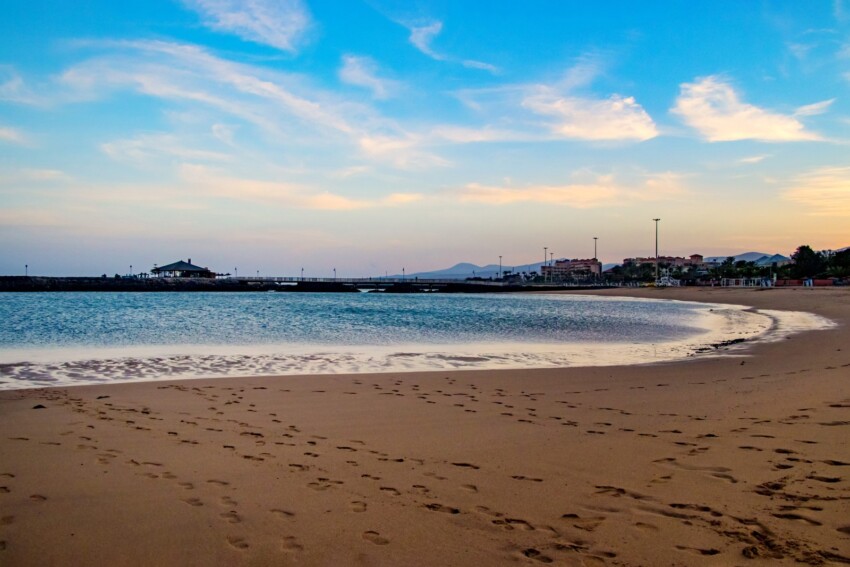
Caleta de Fuste beach is located along the east coast of Fuerteventura 14 kilometres south of the island’s capital Puerto del Rosario and 8 kilometres south of Fuerteventura Airport.
The beach of fine golden sand, 600 metres long and a few dozen metres wide, offers the possibility of practising numerous water sports.
This horseshoe-shaped beach is lined with luxurious resorts, excellent hotels and numerous flats for rent and is ideal for families due to its calm and relaxed atmosphere and the absence of high waves.
Caleta de Fuste enjoys a strategic location that allows you to reach every corner of the island within an hour. Not far from the beach are two 18-hole golf courses, a casino and several shopping areas.
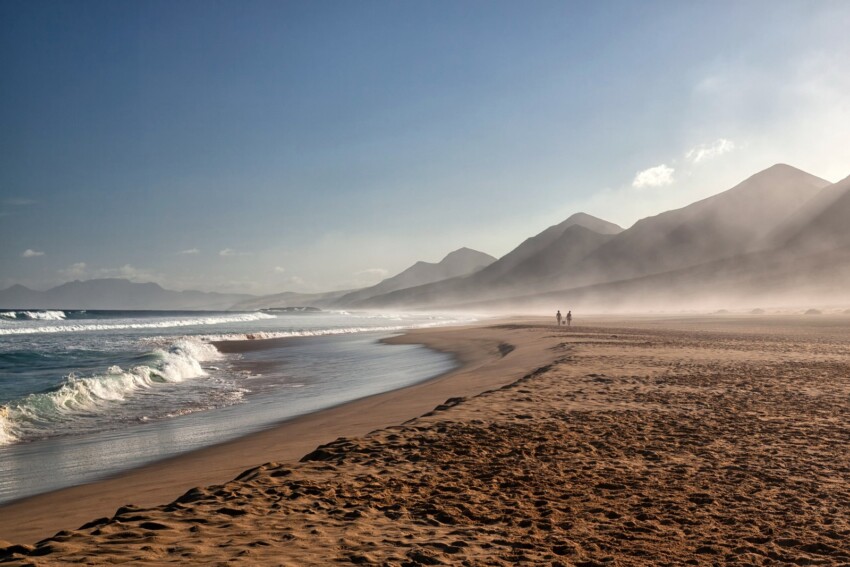
Cofete Beach is located along the south-western coast of Fuerteventura, within the Jandia Natural Park.
Breathtakingly beautiful, the large beach of fine white sand of Cofete stretches for 2.5 kilometres and is dominated by the high mountains of the park.
Its wild appearance is due not only to the beautiful surroundings but also to the sea, which is almost always very rough.
The Playa de Cofete is located in one of the most isolated corners of Fuerteventura and this ensures that it is never crowded. To reach Cofete you have to take a winding road that branches off outside the village of Morro Jable, near the Puerto Deportivo, and continue for 9 kilometres through the mountains.
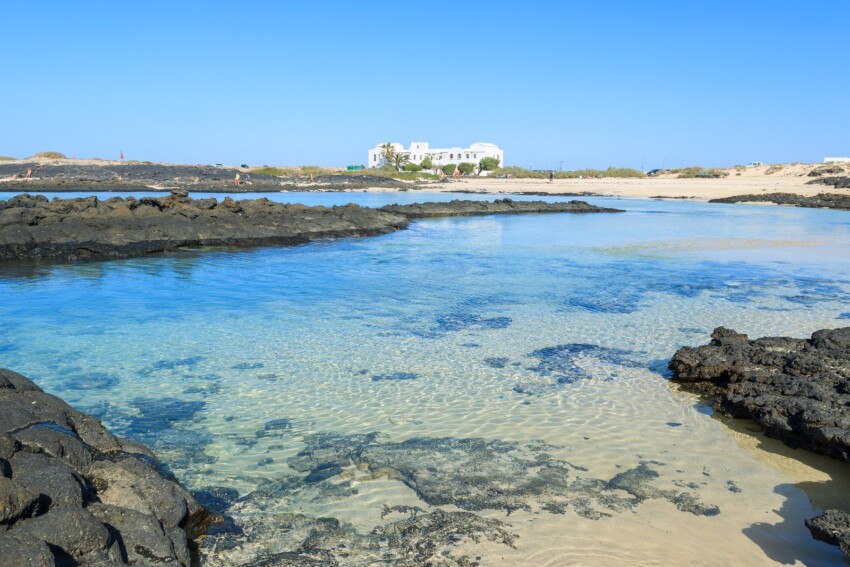
The picturesque village and beach of El Cotillo are located along the north-western coast of Fuerteventura in a wild but very welcoming environment.
The kilometre-long beach of fine white sand is lined with small restaurants, chiringuitos and flats for rent.
El Cotillo beach, like all those along the west coast of the island, is ideal for windsurfing and kitesurfing. Not far away are the beaches of Playa del Toston, Playa del Castillo, Esquinzo, Playa el Charcon, Playa del Ajibe de la Cueva and Playa del Aguila.
For those who have to use public transport, El Cotillo is easily reached by bus 8 from Corralejo and by bus 7 from Puerto del Rosario. Those fortunate enough to travel by hire car can drive through the hinterland of Fuerteventura and admire its picturesque scenery.
Esquinzo Beach, also known as Playa Marabu to distinguish it from the wild beach of the same name south of El Cotillo, is located along the southern coast of Fuerteventura on the shoreline that runs between Morro Jable and Jandia.
The white sandy beach, interrupted in several places by small, characteristic dark rocks, is 3 kilometres long and is served by several chiringuitos.
Playa Esquinzo is a very quiet beach, perfect for long walks, and is also suitable for families with children.
The Grandes Playas are located along the north-east coast of Fuerteventura near the town of Corralejo and within the Corralejo Natural Park.
The Grandes Playas are a series of beaches of fine white sand and small coves surrounded by rocks bathed by crystal-clear turquoise waters that stretch for 8 kilometres.
The northernmost beaches are the best equipped for tourism and the busiest, while as we continue southwards the beaches are smaller and wilder.
The beaches of Medano, Playa de los Matos, Playa Larga, Playa el Viejo, El Pozo, El Bajo Negro, El Dormidero, El Modo and Alzada form the Grandes Playas.
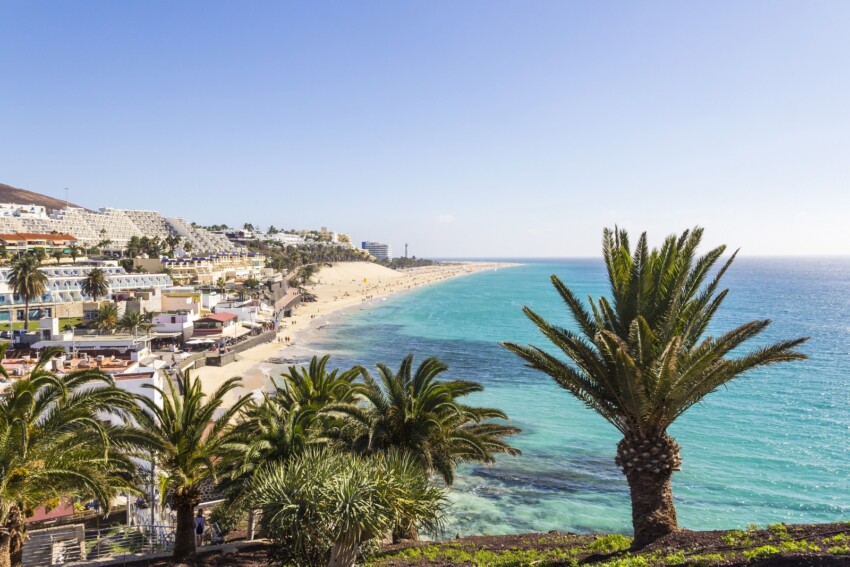
Morro Jable beach, also known as Playa de Matorral, is located along the southern coast of Fuerteventura, in the municipality of Pajara on the Jandia peninsula, and is a favourite destination for families.
The long, white sandy beach has a Caribbean feel and is bathed by a crystal-clear turquoise sea that is protected during most of the year from ocean currents and is therefore also suitable for families with small children.
Diving and snorkelling enthusiasts will particularly appreciate the rocky area to the south where the lush marine fauna can be admired.
The beach is bordered by the promenade of the tourist resort of Morro Jable, once a quiet and picturesque fishing village surrounded by a promontory, where numerous shops, bars and typical restaurants can be found.
Morro Jable is just under an hour’s drive from Fuerteventura Airport. From the village’s small port it is possible to board ferries to Gran Canaria.
Tarajalejo Beach is located along the east coast of Fuerteventura along the FV 2 motorway that connects the resorts of the Jandia Peninsula, such as Costa Calma and Morro Jable, to Fuerteventura Airport and Caleta de Fuste.
The volcanic beach of black sand and pebbles, as yet undiscovered by mass tourism but much loved by the locals, is over a kilometre long and some forty metres wide.
The beach is very scenic and is ideal for those who like to relax on the beach or swim in peace.
Tarajalejo has grown from a small fishing village to a small town with a wealth of amenities while maintaining a typical atmosphere and a strong link with traditions. Not far away is the typical village of Giniginamar, ideal for savouring the fish dishes of the island’s traditional cuisine.
In the following map you can see the location of the main places of interest mentioned in this article.